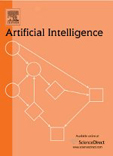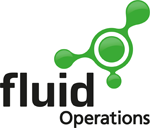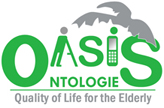TUTORIALS | |||
|---|---|---|---|
Sunday - Day 1 | Monday - Day 2 | ||
Morning | Afternoon | Morning | Afternoon |
Scalable Integration and Processing of Linked Data
Full day tutorial
Given the recent growth in openly-available, rich, structured information published on the Web as Linked Data, this tutorial series focuses on consuming large corpora of such data, with particular emphasis on techniques for performing scalable integration. Following a brief introduction to Linked Data principles and publishing, we cover techniques for crawling, indexing, querying and reasoning over such data. We also highlight pragmatic issues faced when performing such tasks. Along these lines, the Scalable Integration of Linked Data tutorial series targets practitioners who wish to leverage existing Linked Data for their applications, but is also directly relevant to a wider audience hoping to learn more about Linked Data and the related standards.
Read more here.
Organizing Committee
- Andreas Harth, AIFB, Karlsruhe Institute of Technology, Germany
- Aidan Hogan, Digital Enterprise Research Institute (DERI), National University of Ireland in Galway, Ireland
- Spyros Kotoulas, VU University Amsterdam, Netherlands
- Jacopo Urbani, VU University Amsterdam, Netherlands
The Web of Data for E-Commerce in Brief
Full day tutorial
The GoodRelations ontology (http://purl.org/goodrelations/) is one huge success story of applying Semantic Web technology to business challenges. In this tutorial, we will (1) give a comprehensive overview and hands-on training on the conceptual structures of the GoodRelations ontology including patterns for ownership and demand, (2) present the full tool chain for producing and consuming GoodRelations-related data, (3) explain the long-term vision of linked open commerce, (4) describe the main challenges for future research in the field, and (5) discuss advanced topics, like access control, identity and authentication (e.g. with WebID); micropayment services (like Payswarm), and data management issues from the publisher and consumer perspective.
Read more here.
Organizing Committee
- Martin Hepp, Bundeswehr University Munich, Germany
- Alex Stolz, Bundeswehr University Munich, Germany
- László Török, Bundeswehr University Munich, Germany
SPARQL 1.1: Theory and Practice
Half day tutorial
This tutorial will cover the code of the SPARQL query language then describe how the SPARQL algebra defines the semantics of query execution. It will give the participant a solid understanding of how to write and design SPARQL queries, from basic access through to use of the newest features as well as a grounding in the formal underpinnings of the language.
Find the schedule of the tutorial here.
Organizer
- Andy Seaborne, Epimorhics Ltd., UK
Debugging Ontologies and Mappings in Ontology Networks
Half day tutorial
Developing ontologies is not an easy task and, as the ontologies grow in size, they are likely to show a number of defects. Such ontologies, although often useful, also lead to problems when used in semantically-enabled applications. Wrong conclusions may be derived or valid conclusions may be missed. Defects in ontologies can take different forms. Syntactic defects are usually easy to find and to resolve. Defects regarding style include such things as unintended redundancy. More interesting and severe defects are the modeling defects which require domain knowledge to detect and resolve such as defects in the structure, and semantic defects such as unsatisfiable concepts and inconsistent ontologies. Further, during the recent years more and more mappings between ontologies with overlapping information have been generated, e.g. using ontology alignment systems, thereby connecting the ontologies in ontology networks. This has led to a new opportunity to deal with defects as the mappings and other ontologies in the network may be used in the debugging of a particular ontology in the network. It also has introduced a new difficulty as the mappings may not always be correct and need to be debugged themselves. In this tutorial we give an overview of current approaches for debugging semantic and structure defects in ontologies (single or in an ontology network) as well as approaches for debugging mappings.
Read more here.
Organizing Committee
- Patrick Lambrix, Linköping University, Sweden
- Guilin Qi, Southeast University, China
- Christian Meilicke, Mannheim University, Germany
Ten Ways to make your Semantic App addictive – Revisited
Half day tutorial
In many application scenarios useful semantic content can hardly be created (fully) automatically, but motivating people to become an active part of this endeavor is still an art more than a science. In this tutorial we will look into fundamental design issues of semantic-content authoring technology - and of the applications deploying such technology - in order to find out which incentives speak to people to become engaged with the Semantic Web, and to determine the ways these incentives can be transferred into technology design. We will present how methods and techniques from areas as diverse as participation management, usability engineering, mechanism design, social computing, and game mechanics can be jointly applied to analyze semantically enabled applications, and subsequently design incentives-compatible variants thereof. The discussion will be framed by three case studies on the topics of enterprise knowledge management, media and entertainment, and IT ecosystems, in which combinations of these methods and techniques has led to increased user participation in creating useful semantic descriptions of various types of digital resources - text documents, images, videos and Web services and APIs. Furthermore, we will revisit the best practices and guidelines that have been at the core of an earlier version of this tutorial at the previous edition of the ISWC in 2010, following the empirical findings and insights gained during the operation of the three case studies just mentioned. These guidelines provide IT developers with a baseline to create technology and end-user applications that are not just functional, but facilitate and encourage user participation that supports the further development of the Semantic Web.
Read more here.
Organizing Committee
- Elena Simperl, Karlsruhe Institute of Technology, Germany
- Roberta Cuel, University of Trento, Italy
- Markus Rohde, University of Siegen, Germany
- Carl Goodman, Pepper's Ghost Productions Ltd., UK
"But I did a user study!" vs "What do you mean I need a user study?"
Or How to address common problems developing and delivering a user interaction semantic web research contribution
Half day tutorial
Hi there.
Does the following sound like you?
You are creating a tool that is supposedly for Real People to use, so you figure, do a user study of some kind and you'll submit it as a paper?
You've tried the above and the paper didn't get accepted - saying "this isn't research; it's just applied user centered design"
You want to validate your tool work with users but you don't have the expertise either to test your idea or prove that it's a user interaction contribution?
You've designed a tool that's a really cool technology - whether users use it or not, you don't care about the user testing, you just want to get the contribution out there, but reviewers say "where's the evaluation"?
If any of the above scenarios sound like you, we feel your pain. But don't worry: we can help.
Read more here.
Organizers
- m.c. schraefel, University of Southampton, UK
- Igor Popov, University of Southampton, UK
Semantic Web Technology in Watson
Half day tutorial
Watson (http://ibmwatson.com) is an open-domain natural language question answering system that answers questions with precision and confidence rivaling the best human experts at the task, and that emerged victorious in a widely viewed public challenge on the American TV Quiz Show, Jeopardy!. Semantic Web Technology, enhanced by a massive use of open linked data, plays a crucial role in Watson. For example, linked data such as DBpedia and Geonames and triple stores such as Sesame have been used to generate candidate answers and to score them under multiple points of view such as type coercion and geographic proximity. In addition, the connection between linked data and natural language text offered by Wikipedia has been very useful to generate open domain training data for relation detection and entity recognition systems, substantially improving the NLP capabilities of the system and therefore allowing the development of a truly open domain QA system. This tutorial is focus on the Semantic Web Technology adopted by Watson and on how it fits in the general Deep QA architecture. The tutorial is structured in two parts, the first focusing on the open-domain QA challenge and the Watson architecture, the second focused on the use of semantic web technology and linked open data in Watson.
Read more here.
Organizing Committee
- Alfio Massimiliano Gliozzo - IBM T.J. Watson Research, Deep QA – Algorithms Team
- Aditya Kalyanpur - IBM T.J. Watson Research, Deep QA – Algorithms Team
- Chris Welty - IBM T.J. Watson Research, Deep QA – Algorithms Team



















